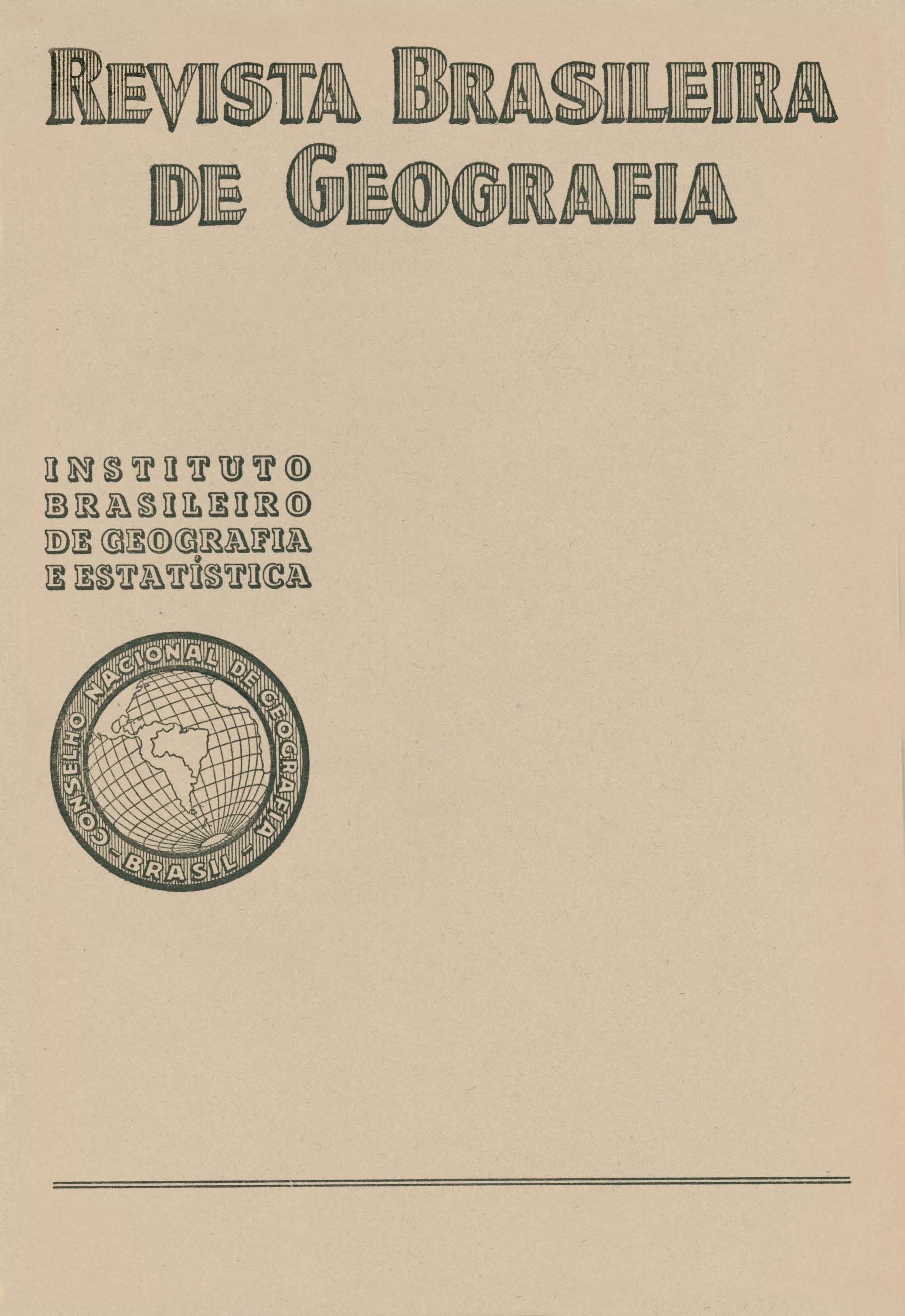Aspectos do Vale do Rio Araguaia
Keywords:
Araguaia; Rio; Vale, VegVegetação; Geomorfologia;, Geografia Econômica;Abstract
The valley of the Araguaia river, as in general throughout the Central West of Brazil, is chiefly characterized, physically, by a tropical climate, the smooth relief of the plateaus (chapadas) surrounding it to the south and west, and the fairly dense cover of low trees interspersed with coarse grassland (cerrado), the range of permeability of the rocks corresponds closely to the degree of undulation of the worn surfaces.
A study of the distribution of the annual rainfall shows that there are two clearly marked seasons: a dry one in winter and spring and a rainy one in summer and autumn, typical of the damp, tropical climate of the region.
Externally the region is mainly to be distinguished by the broad extent of cerrado of various kinds, where the patches of forest, with the exception of the equatorial forest, stand out like islands or line the rivers, which are quite numerous, with winding ribbons of woodland.
The area covered by our survey must be counted among those with the lowest demographic density in Brazil. The extent of this underpopulation may be illustrated by the fact that in an area of about 30,230 square miles (lying between our line of flight and the river Araguaia), no more than two cities stand out, Aragarças and Barra do Garças, and they can boast of only 15,151 and 3,110 inhabitants respectively. Generally speaking, the population such as it is tends to cluster around the outposts of the F.B.C. (Fundação Brasil Central-Central Brazil Foundation) in certain zones, and most of the tribes comprising the indigenous inhabitants of the Araguaia Valley come under the influence of the F.B.C. and the S. P. I. (Serviço de Proteção aos indios-Indian Protection Service) . The remaining communities owe their existence to the airstrips cleared and leveled by the F.A.B. (Força Aérea Brasileira-Brazilian Air Force), which carries mail to the most out of the way corners of the country. Though stockraising cannot be said to be outstandingly advanced in the region, there is considerable roam for development both on the wooded grasslands of the cerrado and on t"e more open savannas of the Araguaia floodplain. Even as things are, however, the raising of livestock must be considered a major occupation supported by rudimentary agriculture, based on the routine process of clearing the land by slashing and burning, the principal crops being rice, beans and cassava (manioc)-Fig. 15.
It should be noted that the rivers are very well stocked and fishing is a commonplace activity providing a staple item in the diet of the local inhabitants.
Transportation is one of the chief difficulties and the river network is almost the only men of traveling from place to place, albeit the two most important watercourses, the Rio das Mortes and the Araguaia, are practically unnavigable in the dry season, except by very small craft (Fig. 16). Generally speaking;, the airplane is used in cases of emergency, but facilities are not enough to meet local requirements, particularly as regards maintenance of the outposts and transportation of the sick and injured to more advanced centers where treatment is available. Nonetheless, it is to be hoped and expected that the localization of the New Capital of Brazil within the West Central region will greatly enlarge the possibilities, not only of this area, but also of the whole of the Brazilian hinterland.






